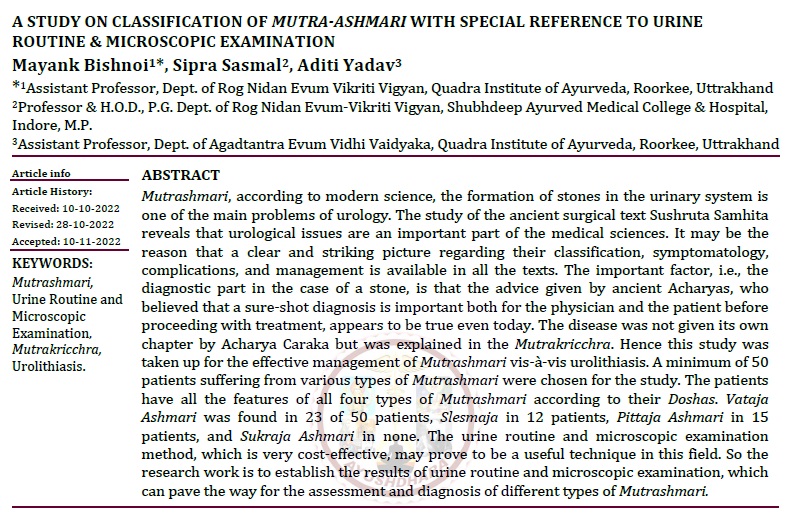A Study on Classification of Mutra-Ashmari with special reference to Urine Routine and Microscopic Examination
DOI:
https://doi.org/10.47070/ayushdhara.v9i5.1069Keywords:
Mutrashmari, Urine Routine and Microscopic Examination, Mutrakricchra, Urolithiasis.Abstract
Mutrashmari, according to modern science, the formation of stones in the urinary system is one of the main problems of urology. The study of the ancient surgical text Sushruta Samhita reveals that urological issues are an important part of the medical sciences. It may be the reason that a clear and striking picture regarding their classification, symptomatology, complications, and management is available in all the texts. The important factor, i.e., the diagnostic part in the case of a stone, is that the advice given by ancient Acharyas, who believed that a sure-shot diagnosis is important both for the physician and the patient before proceeding with treatment, appears to be true even today. The disease was not given its own chapter by Acharya Caraka but was explained in the Mutrakricchra. Hence this study was taken up for the effective management of Mutrashmari vis-à-vis urolithiasis. A minimum of 50 patients suffering from various types of Mutrashmari were chosen for the study. The patients have all the features of all four types of Mutrashmari according to their Doshas. Vataja Ashmari was found in 23 of 50 patients, Slesmaja in 12 patients, Pittaja Ashmari in 15 patients, and Sukraja Ashmari in none. The urine routine and microscopic examination method, which is very cost-effective, may prove to be a useful technique in this field. So the research work is to establish the results of urine routine and microscopic examination, which can pave the way for the assessment and diagnosis of different types of Mutrashmari.
Downloads

Downloads
Published
Issue
Section
License
Copyright (c) 2022 AYUSHDHARA

This work is licensed under a Creative Commons Attribution-NonCommercial-ShareAlike 4.0 International License.


